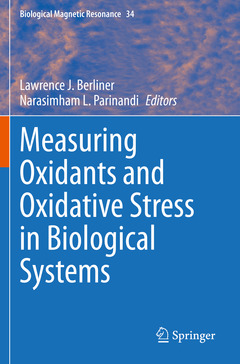Description
Measuring Oxidants and Oxidative Stress in Biological Systems, 1st ed. 2020
Biological Magnetic Resonance Series, Vol. 34
Coordinators: Berliner Lawrence J., Parinandi Narasimham L.
Language: English
Subjects for Measuring Oxidants and Oxidative Stress in Biological...:
Publication date: 08-2021
237 p. · 15.5x23.5 cm · Paperback
Publication date: 08-2020
237 p. · 15.5x23.5 cm · Hardback
Description
/li>Contents
/li>Biography
/li>Comment
/li>
This book describes the methods of analysis and determination of oxidants and oxidative stress in biological systems. Reviews and protocols on select methods of analysis of ROS, RNS, oxygen, redox status, and oxidative stress in biological systems are described in detail. It is an essential resource for both novices and experts in the field of oxidant and oxidative stress biology.
Introduces assays for thiols and modification as well as pitfalls of ROS measurements by fluorescent probes
Describes methods and reagents as well as instrumental methods for measuring oxidants and oxidative stress in biological systems
Provides clinically related models and approaches




